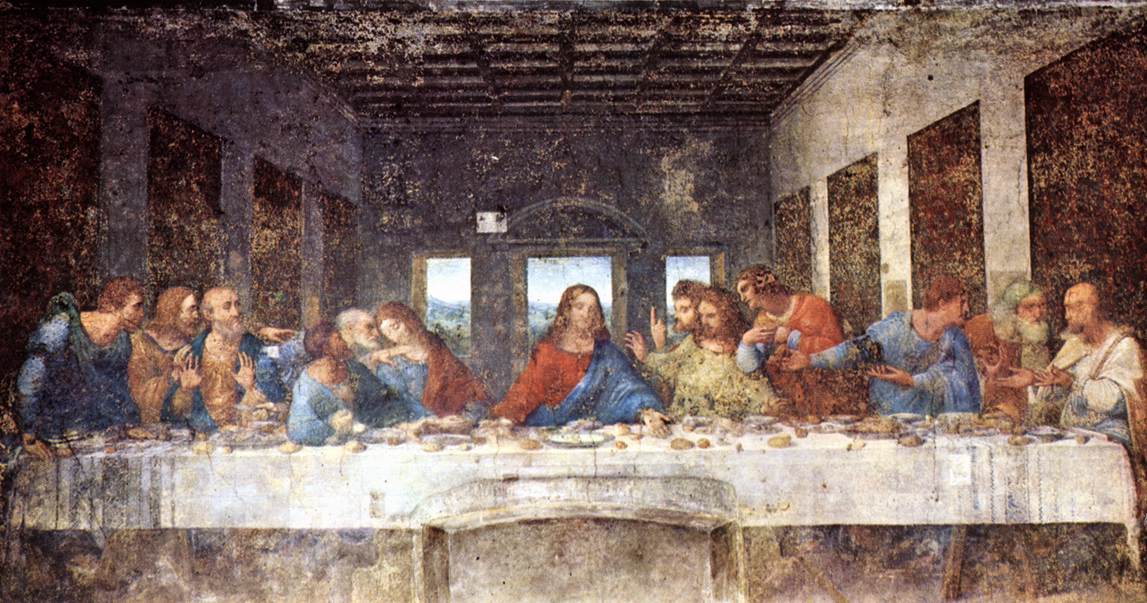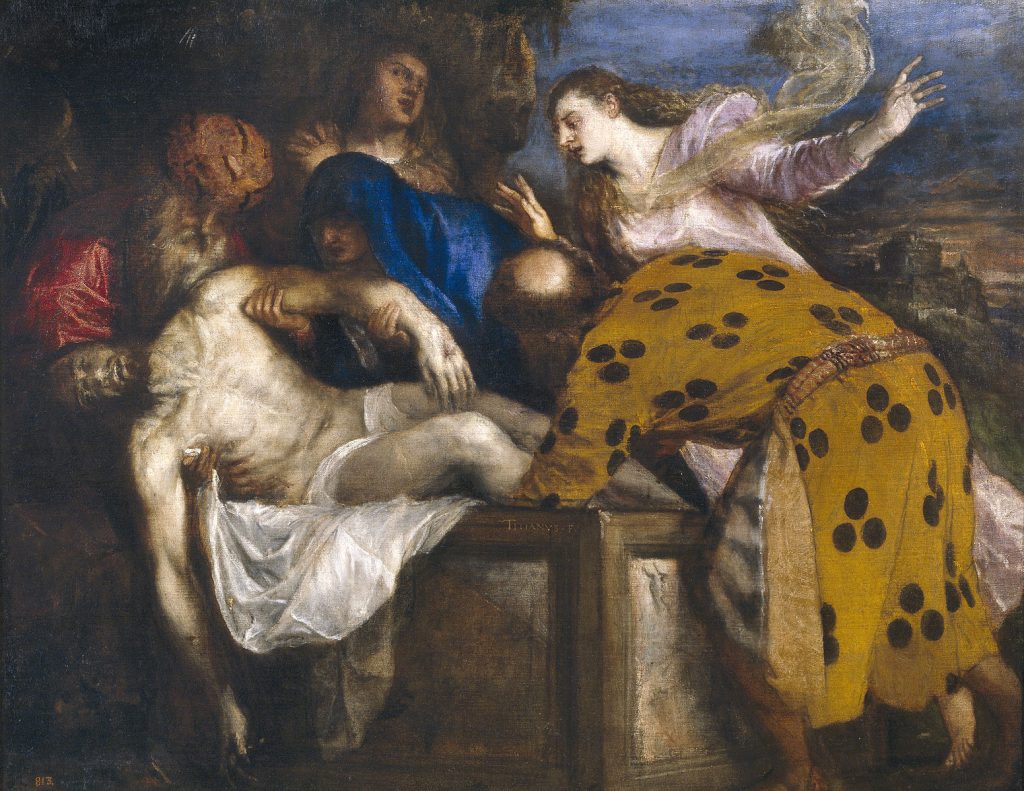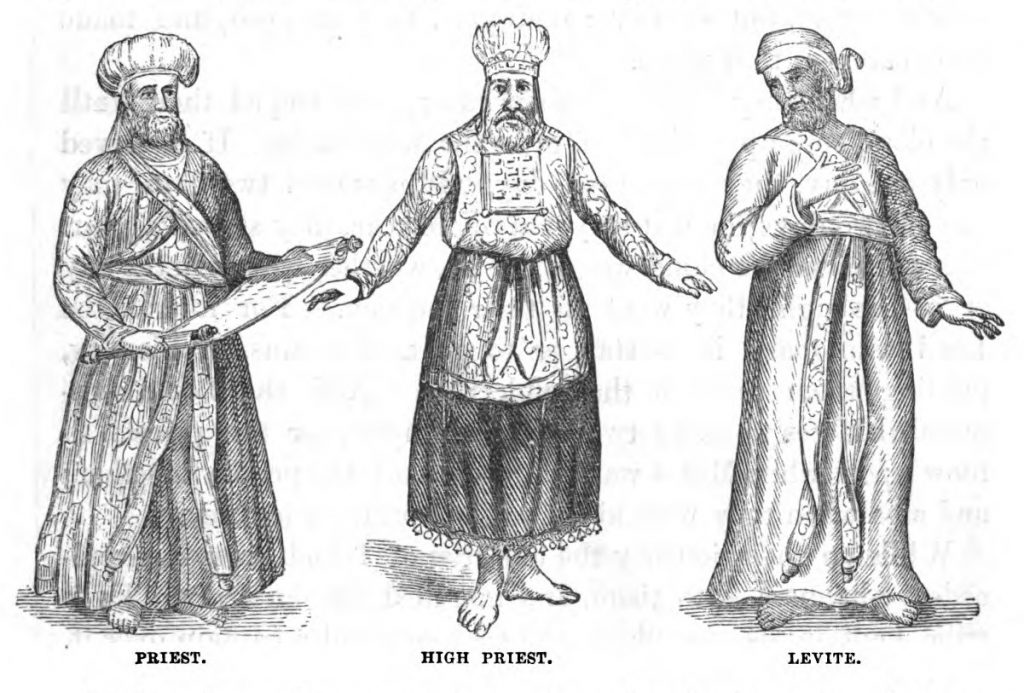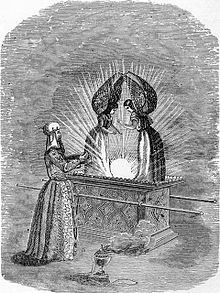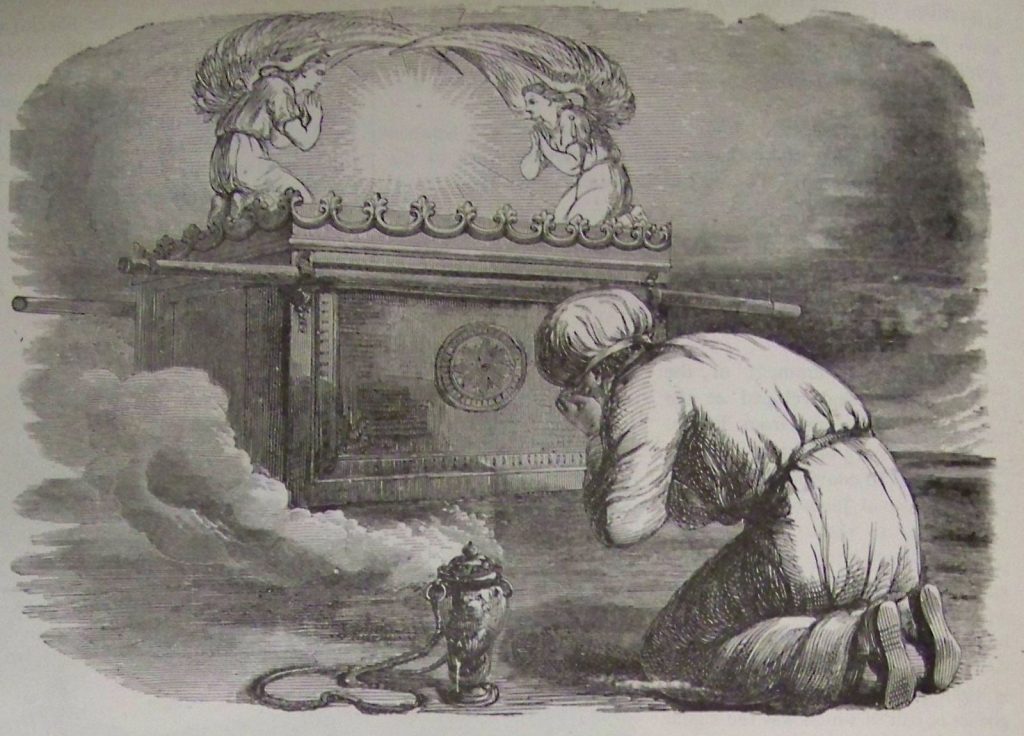I was sitting in church and listening to my new bishop in fast and testimony meeting. He said the white cloth covering the sacrament table was symbolic of the white linen that covered Jesus in his burial. I had never thought of that or even heard that symbolism. Since I’ve been trying to make the sacrament more sacred and personal for me, I decided I would search this out a little more. I like symbolism, but I believe that the sacrament not only reminds us of Christ’s last supper and sacrifice, but also points to a future sitting down with Jesus. Anyway, I have done some research on when and where linen cloth appears in the scriptures. This is what I found:
Christ wrapped in linen for burial
After Jesus died on the cross, Joseph of Arimathea asked Pilate if he could take Jesus’ body down. Nicodemus brought a mixture of myrrh and aloes,
So they took the body of Jesus and wrapped it in linen cloths with the spices, according to the Jewish burial custom. (John 19:40)
Mark’s account also refers to wrapping Jesus’ body in linen:
Joseph bought some linen cloth, took down the body, wrapped it in the linen, and placed it in a tomb cut out of rock. Then he rolled a stone against the entrance of the tomb. (Mark 15:46)
Since Christ is our savior, who atones for our sins, the linen covering his body in burial could symbolize his covering our sins, or atonement.
Ancient Rules for the Levites wearing linen cloth
I found that the Lord prescribed some specific rules for the priests administering in the Tabernacle during the time of Moses, in which they wear linen clothing:
When they enter the gates of the inner court, they are to wear linen clothes; they must not wear any woolen garment while ministering at the gates of the inner court or inside the temple. They are to wear linen turbans on their heads and linen undergarments around their waists. They must not wear anything that makes them perspire. (Ezekiel 44:17-18)
They made the tunics of woven linen for Aaron and his sons, and the turban of fine linen, and the caps of fine linen, and the linen breeches they made of twisted linen.
A side note: I think it is interesting that they were not to wear anything that would make them perspire — other sources say made of wool — itchy scratchy cloth was out. Makes sense to me. (There is also a story where Joseph Smith took off his woolen garments to work in the heat.)
Day of Atonement and the covering
I then looked up some information about the day of atonement and the covering symbolism of the Mercy Seat — the space between the two angels on the ark of the covenant.
“This shall be a permanent statute for you: in the seventh month, on the tenth day of the month, you shall humble your souls and not do any work, whether the native, or the alien who sojourns among you; for it is on this day that atonement shall be made for you to cleanse you; you will be clean from all your sins before the LORD.“It is to be a sabbath of solemn rest for you, that you may humble your souls; it is a permanent statute.… (Leviticus 16:29-31)
The mercy seat is called the kapporeth in Hebrew:
Though kapporeth is probably derived from kaphar, which is often considered to mean cover, the literal meaning of kaphar is wipe out, implying that kapporeth means thing of wiping out/thing of cleansing.[1]
According to the Hebrew Bible, the mercy seat (Hebrew: הַכַּפֹּֽרֶת ha-kappōreṯ) was the gold lid with two cherubim beaten out of the ends of it to cover and create the space into which God would appear. This gold cover was placed on the Ark of the Covenant. This was connected with the rituals of the Day of Atonement; where God did appear
Yom Kippur (/jɔːm, joʊm, jɒm ˈkɪpər, kɪˈpʊər/;[1] Hebrew: יוֹם כִּיפּוּר, IPA: [ˈjom kiˈpuʁ], or יום הכיפורים), also known as the Day of Atonement, is the holiest day of the year in Judaism.[2] Its central themes are atonement and repentance. (wikipedia)
In my last post about the “skin covering” God Gave Adam and Eve after the Fall, Mark Robinson shared another great insight for “kaphar” —
We should also recognize the fact that Adam and Eve recognize their “nakedness” after the fall as a symbol for their need for an atonement. The Hebrew word Kaphar or “covering” illustrates how we all need the LORD to cover the heavy cost of our sin. (Robinson, comments)
Next time you take the sacrament, you might apply the symbolism of the covering, Kaphar and our need for Christ’s atonement. There is so much there to think about.
Anciently, woven cloth can be silk or linen
As often happens for me — the Lord opens up other information while I am searching for greater understanding. (like the quote shared with me above) — While listening to Hugh Nibley early one morning, he talked about the word “silk” in the scriptures and offered various forms of the word in different languages. He said that most often the word is used to describe woven cloth — be that silk or linen or gauze-type. So we might keep that thought when we read about any covering of cloth.
It’s interesting that in the Old Testament, in Proverbs, way back there, the word is shēsh. Well, that’s the Egyptian word sšr/šsr for linen or any fine cloth. You just draw it with a bag and a picture of a piece of cloth. Shēsh is the same word the Egyptians were using. It’s translated in the King James as silk. And we have meshî translated as silk way back in Ezekiel [16:10, 13]. In Revelation you have it in Greek. It is sērikos. That comes from the land of the Seres, which is supposed to have been a tribe in India. The Greek sindōn is the word for linen. But the Arabic word for a silkworm is dūd, “a gauze-spinning worm.” They use the words gauze, silk, and cotton, so no wonder it tells us in Harper’s big Latin dictionary that this word [silk] refers in general to any fine fiber. (Hugh Nibley)

